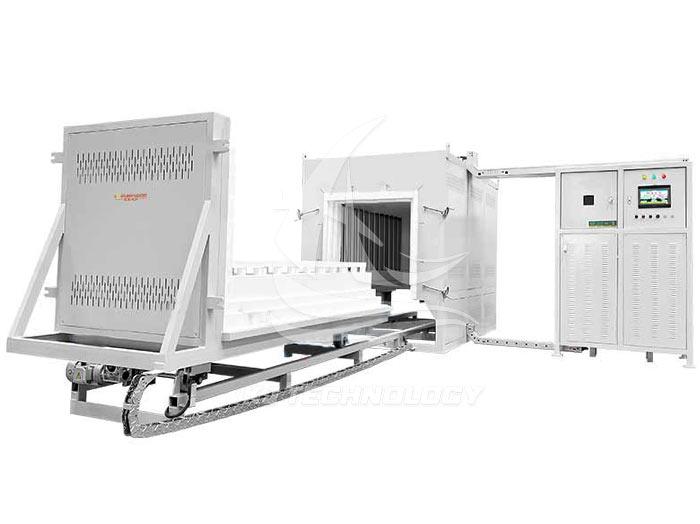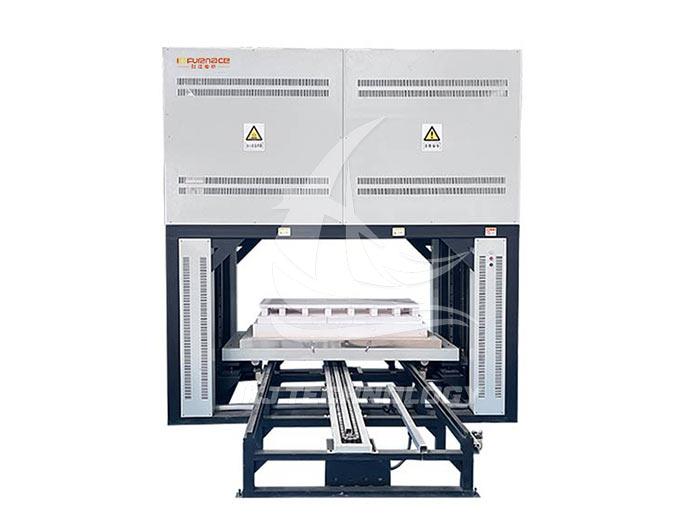How to choose a vacuum hot press furnace for experiments?
 09-22-2025 Author: KJ technology
09-22-2025 Author: KJ technology
When selecting a vacuum hot press furnace for experiments, comprehensive considerations should be made from multiple aspects such as temperature range, pressure range, heating method, control system, vacuum degree, cooling method, safety performance, furnace size, production efficiency, heating elements, insulation screen, vacuum system, energy-saving technology, environmental requirements, equipment price, after-sales service, special gas compliance, and furnace temperature uniformity. The following is a specific analysis:
Temperature range: Determine the maximum sintering temperature required based on the characteristics of the sintered material and process requirements. For example, certain ceramic materials may require sintering temperatures of up to 2000 ℃ or higher. When making a purchase, one should choose a model that is 100-200 ℃ higher than the experimental temperature to reserve a safety margin.
Pressure range: Hot pressing sintering requires applying a certain amount of pressure to promote the bonding between powder particles. Select the appropriate pressure range and pressurization method based on material characteristics, such as hydraulic electric pressurization or servo electric pressurization.
Heating method: Usually two methods are used: resistance heating or electron beam heating. Resistance heating can effectively control temperature distribution, but the heating speed is slower; Electron beam heating can quickly increase the temperature, but the temperature distribution is difficult to control. Therefore, it is necessary to choose a suitable heating method based on actual needs.
Control system: The control system is crucial for the accuracy and stability of experimental results. A control system with good control accuracy and reliability should be selected, such as touch screen+PLC control mode, which supports automatic adjustment of parameters such as temperature, pressure, vacuum degree, and historical data recording.
Vacuum degree: Different processes have different requirements for vacuum degree, ranging from low vacuum to high vacuum or even ultra-high vacuum. High vacuum helps reduce material oxidation and improve sintering quality. When making a purchase, it is necessary to choose the appropriate vacuum degree range according to actual needs.
Cooling method: Usually two methods are used: natural cooling or forced cooling. The natural cooling rate is slow, but relatively mild, suitable for handling easily oxidizable materials; The forced cooling rate is relatively fast, but it may cause internal stress and deformation in the material. Therefore, it is necessary to choose a suitable cooling method based on actual needs.
Safety performance: The vacuum hot press furnace is a high-temperature and high-pressure equipment that requires good safety performance, such as explosion-proof design, over temperature protection, etc., to ensure the safe conduct of experiments.
Furnace size: Select the appropriate furnace size and volume based on the product size and batch size. Ensure that the furnace can accommodate the workpieces to be sintered and leave appropriate space for easy access.
Production efficiency: Consider the heating rate, cooling rate, and degree of automation of the equipment to improve production efficiency and reduce labor intensity.
Heating element: Choose heating elements with high thermal conductivity, low deformation at high temperatures, and minimal heat loss, such as tungsten molybdenum wire, graphite, etc. Ensure that the material of the heating element does not affect the quality of the workpiece.
Heat shield: The heat shield is the main component of the vacuum furnace heating chamber and has a significant impact on the power and performance of the equipment. Choose insulation screen materials that have good heat resistance and can effectively block heat convection, such as tungsten molybdenum materials.
Vacuum system: A good vacuum system can quickly achieve the required vacuum degree and maintain a stable vacuum environment. To understand the performance and configuration of vacuum pumps such as mechanical pumps and Roots pumps.
Energy saving technology: Choose a vacuum sintering furnace that adopts energy-saving technology, such as optimizing the layout of heating elements, using high-efficiency insulation materials, etc., to reduce energy consumption and operating costs.
Environmental requirements: Ensure that the equipment complies with local environmental regulations and standards, and reduce the discharge of waste gas and wastewater. Consider the cooling method and medium of the equipment, and choose an environmentally friendly and economical cooling solution.
Equipment price: Choose the appropriate equipment model and configuration based on budget and actual needs. When comparing prices, factors such as equipment performance, quality, and after-sales service should be comprehensively considered.
After sales service: Choose a supplier with a good after-sales service system to ensure that the equipment can receive timely technical support and maintenance services during use. Pay attention to the supply and replacement costs of vulnerable parts to reduce long-term operating costs.
Special gas compliance: If special gases (such as protective gases, reaction gases, etc.) need to be introduced during the sintering process, it is necessary to ensure that the equipment has corresponding gas introduction and control functions.
Uniformity of temperature zone inside the furnace: Test the temperature uniformity at different temperature points to ensure uniform temperature distribution inside the furnace and improve sintering quality.








